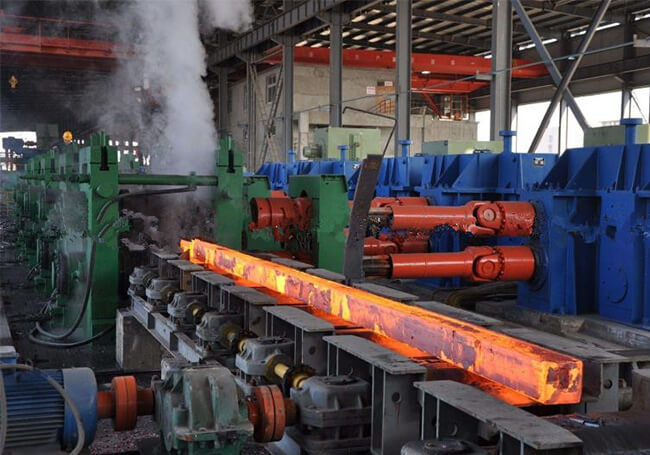Today, let's popularize the common supporting parts of rolling mills. and the role of these parts.
The first is about security, mainly in the following categories.
The safety mortar is loaded between the pressing screw of the rolling mill and the bearing of the upper and lower rolls, and is equipped with a protective cover.
When the rolling force exceeds the allowable value, the rupture of the safety mortar increases the distance between the rolls, thereby protecting the rolls. The material of the safety mortar is generally hard and brittle cast iron. Its strength should be lower than that of the roll, and cast steel or forged steel should not be abused.
The plum blossom bushing is loaded on the plum blossom head of the roll. When the rolling torque exceeds the allowable torsion torque, the plum blossom bushes first break, thus protecting the rolls.
The coupling is installed at the connection between the shaft and the shaft of the transmission mechanism. When the motor is overloaded, the pins in the coupling are cut off, thereby protecting the motor.
Overcurrent relays and thermal relays, located at the power input to the motor. When the input current exceeds the load, it can automatically cut off the power supply to protect the motor.
Then there is the guide device of the rolling mill
This is an indispensable and important part in the section steel rolling mill. In order to make the rolling piece enter and exit the pass accurately according to the specified position, direction and required state, avoid the rolling piece from wrapping the roll, the rolling piece is scraped and extruded, and ensure that workers and The equipment is safe, and the guide device should be installed before and after the roll.
The guide device includes a guide plate, a guide box, a fixed beam, a guide tube, a torsion guide plate, a torsion roller, and a front and back enclosure.
The guide plate is used to guide the rolling piece to enter and exit the pass correctly, so that the rolling piece will not be skewed and twisted in the horizontal direction.
The guide plate at the loading entrance is called the entrance guide plate, and the guide plate installed at the exit is called the exit guide plate. Sometimes the guides are loaded into the guide box.
The guard plate is installed on the outlet side to prevent roll wrapping accidents.
The lower guard plate is mounted on the guide beam. The upper guard plate is more difficult to fix, and it is not as reliable as the lower guard plate, and its top may leave the roll due to the vibration of the stand, or it may cause an accident because the rolled piece hits the tip of the guard plate.
The use of upper pressure in the hole design is an effective measure to avoid this trouble.
The three-roll mill needs to have a lifting table or a steel turning guide plate, as well as various special steel turning machines, steel shifting machines, reverse enclosures, positive enclosures, vertical enclosures and other devices.
The function of the reverse enclosure is to guide the flat oval, diamond, and rectangular rolling stock to the next stand, and turn the 90-degree angle to make the rolling stock stand into the square hole or vertical rolling hole. The rolling stock cannot naturally complete the above-mentioned turning action in the running groove of the hoarding, and must resort to twisting the guide tube.
This is our introduction to the common parts of rolling mills today. We are a professional manufacturer of rolling mills, you can pay attention to us and consult us anytime if you have any questions.

Please send us your request and we reply to you with in 24 hours.
Submit Request